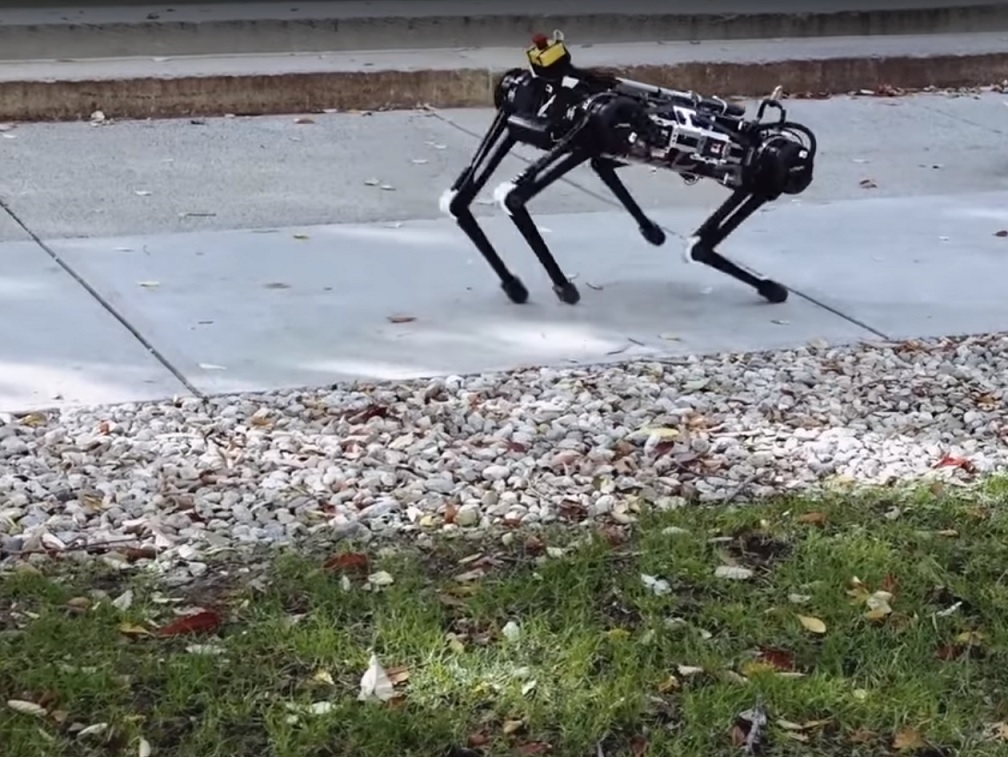This post is also available in:
 עברית (Hebrew)
עברית (Hebrew)
MIT’s Cheetah 3 robot, a 90-pound mechanical beast — about the size of a full-grown Labrador – can now leap and gallop across rough terrain, climb a staircase littered with debris, and quickly recover its balance when suddenly yanked or shoved, all without using cameras or other external sensors, it is essentially blind.
It nimbly “feels” its way through its surroundings in a way that engineers describe as “blind locomotion,” much like making one’s way across a pitch-black room.
“There are many unexpected behaviors the robot should be able to handle without relying too much on vision,” says the robot’s designer, Sangbae Kim, associate professor of mechanical engineering at MIT. “Vision can be noisy, slightly inaccurate, and sometimes not available, and if you rely too much on vision, your robot has to be very accurate in position and eventually will be slow. So we want the robot to rely more on tactile information. That way, it can handle unexpected obstacles while moving fast.”
In addition to blind locomotion, the robot has an improved hardware, including an expanded range of motion compared to its predecessor Cheetah 2, that allows the robot to stretch backwards and forwards, and twist from side to side, much like a cat limbering up to pounce, according to mit.edu.
Researchers envision that within the next few years, the robot will carry out tasks that would otherwise be too dangerous or inaccessible for humans to take on.
The Cheetah 3 can blindly make its way up staircases and through unstructured terrain, and can quickly recover its balance in the face of unexpected forces, thanks to two new algorithms developed by Kim’s team: a contact detection algorithm, and a model-predictive control algorithm.
This research was supported, in part, by the Air Force Office of Scientific Research.


























